- Privacy Policy

Home » Assignment – Types, Examples and Writing Guide

Assignment – Types, Examples and Writing Guide
Table of Contents

Assignments are an essential part of academic learning, designed to help students develop skills, reinforce knowledge, and demonstrate their understanding of course material. They come in various forms, each serving a unique purpose in enhancing critical thinking, research abilities, and problem-solving skills. This guide explores the different types of assignments, provides examples, and offers a step-by-step writing guide to help you complete your assignments effectively.
What is an Assignment?
An assignment is a task given to students as part of their coursework to assess and develop their understanding of a particular topic or skill. Assignments can range from simple essays to complex research papers, and their objectives vary depending on the academic level, course, and subject.
Types of Assignments
- Example : Write an argumentative essay on the impact of social media on mental health.
- Example : Conduct a study on the effects of climate change on biodiversity and present your findings in a research paper.
- Example : Analyze a company facing a decline in market share and suggest strategies to regain its competitive advantage.
- Example : Write a lab report on an experiment testing the pH levels of different soil samples.
- Example : Reflect on your experience in a group project, discussing what you learned and the challenges you faced.
- Example : Create an annotated bibliography on recent studies about renewable energy technologies.
- Example : Prepare a presentation on the history and future of artificial intelligence.
- Example : Solve a set of calculus problems related to limits and derivatives.
Writing Guide for an Assignment
Completing an assignment effectively requires careful planning, research, and clear writing. Here’s a step-by-step guide to help you through the process:
Step 1: Understand the Assignment Requirements
- Read the Instructions Carefully : Review the guidelines, including formatting, word count, and citation style. Ensure you understand the objective and expectations.
- Identify the Purpose : Determine whether the assignment requires you to argue, analyze, describe, or reflect.
- Clarify the Question : Make sure you understand the question or prompt. If unclear, ask your instructor for clarification.
Step 2: Conduct Research and Gather Information
- Search for Reliable Sources : Use academic databases, books, and credible websites to gather information. Take notes and organize your sources.
- Evaluate Sources : Ensure the sources you use are credible, recent, and relevant to the assignment topic.
- Create an Outline : Plan the structure of your assignment. An outline will help you organize your thoughts and stay on track.
Step 3: Write a Strong Introduction
- Introduce the Topic : Provide background information to set the context.
- State the Purpose : Clearly state the purpose of the assignment or your main argument.
- Present the Thesis Statement : In assignments like essays or research papers, include a thesis statement that summarizes your main point.
Step 4: Develop the Main Body
- Follow the Outline : Organize the main points logically, with each paragraph focusing on one idea.
- Use Evidence : Support your arguments or analysis with data, examples, or quotes from reliable sources.
- Analyze and Interpret : Go beyond description—explain the significance of your points and how they contribute to the overall argument or purpose.
Step 5: Write a Conclusion
- Summarize Key Points : Recap the main ideas discussed in the assignment.
- Restate the Thesis : Reiterate the main argument or purpose of the assignment.
- End with a Thought-Provoking Statement : Leave the reader with a final thought or recommendation, if applicable.
Step 6: Edit and Proofread
- Check for Clarity and Coherence : Ensure each paragraph flows logically and supports the main argument.
- Correct Grammar and Spelling Errors : Proofread for typos, grammatical mistakes, and punctuation errors.
- Verify Formatting : Confirm that the assignment meets formatting guidelines and that citations follow the required style (e.g., APA, MLA).
Step 7: Cite Sources and Create a Bibliography
- Use In-Text Citations : Properly cite all sources used within the text.
- Compile a Bibliography or Reference List : List all sources used in the assignment in the specified format (e.g., APA, MLA).
- Check for Plagiarism : Ensure that all borrowed information is correctly cited to avoid unintentional plagiarism.
Examples of Assignments by Academic Discipline
1. English Literature
- Assignment : Analyze the use of symbolism in The Great Gatsby by F. Scott Fitzgerald.
- Objective : Interpret literary symbols and their impact on the story’s themes.
2. Psychology
- Assignment : Write a case study on a client presenting symptoms of anxiety disorder.
- Objective : Apply theoretical knowledge to assess symptoms, causes, and treatment options.
3. Business
- Assignment : Develop a marketing plan for a new product in the technology industry.
- Objective : Demonstrate understanding of market research, strategy, and consumer behavior.
- Assignment : Conduct a lab experiment on photosynthesis and report your findings.
- Objective : Document experimental procedures, observations, and conclusions.
- Assignment : Discuss the causes and consequences of World War II.
- Objective : Analyze historical events and their impacts on global relations.
Tips for Successfully Completing Assignments
- Start Early : Begin working on your assignment well before the deadline to allow time for thorough research and revision.
- Follow the Rubric : Review any grading rubrics provided to understand how your work will be evaluated.
- Stay Organized : Keep your notes, sources, and drafts well-organized, making it easier to reference and edit your work.
- Use Clear and Concise Language : Avoid jargon and complex language unless necessary; aim for clarity and precision.
- Seek Feedback : If possible, get feedback from peers or instructors to improve your work before submission.
Assignments are valuable learning tools that enable students to apply, analyze, and communicate knowledge. Whether writing an essay, conducting research, or presenting findings, understanding the type of assignment, following a structured writing guide, and implementing effective research and writing techniques can help ensure academic success. By approaching assignments systematically, students can improve their critical thinking, writing skills, and overall academic performance.
- Greetham, B. (2018). How to Write Better Essays . Macmillan International Higher Education.
- Murray, R. (2011). How to Write a Thesis . McGraw-Hill Education.
- Cottrell, S. (2019). The Study Skills Handbook (5th ed.). Bloomsbury Publishing.
- Bailey, S. (2017). Academic Writing: A Handbook for International Students . Routledge.
- Northedge, A. (2005). The Good Study Guide . Open University Press.
About the author
Muhammad Hassan
Researcher, Academic Writer, Web developer
You may also like

Research Summary – Structure, Examples and...

Research Design – Types, Methods and Examples

Research Process – Steps, Examples and Tips

Research Report – Example, Writing Guide and...

Informed Consent in Research – Types, Templates...

Data Interpretation – Process, Methods and...

Want to create or adapt books like this? Learn more about how Pressbooks supports open publishing practices.
Types of Assignments
Cristy Bartlett and Kate Derrington

Introduction
As discussed in the previous chapter, assignments are a common method of assessment at university. You may encounter many assignments over your years of study, yet some will look quite different from others. By recognising different types of assignments and understanding the purpose of the task, you can direct your writing skills effectively to meet task requirements. This chapter draws on the skills from the previous chapter, and extends the discussion, showing you where to aim with different types of assignments.
The chapter begins by exploring the popular essay assignment, with its two common categories, analytical and argumentative essays. It then examines assignments requiring case study responses , as often encountered in fields such as health or business. This is followed by a discussion of assignments seeking a report (such as a scientific report) and reflective writing assignments, common in nursing, education and human services. The chapter concludes with an examination of annotated bibliographies and literature reviews. The chapter also has a selection of templates and examples throughout to enhance your understanding and improve the efficacy of your assignment writing skills.
Different Types of Written Assignments
At university, an essay is a common form of assessment. In the previous chapter Writing Assignments we discussed what was meant by showing academic writing in your assignments. It is important that you consider these aspects of structure, tone and language when writing an essay.
Components of an essay
Essays should use formal but reader friendly language and have a clear and logical structure. They must include research from credible academic sources such as peer reviewed journal articles and textbooks. This research should be referenced throughout your essay to support your ideas (See the chapter Working with Information ).
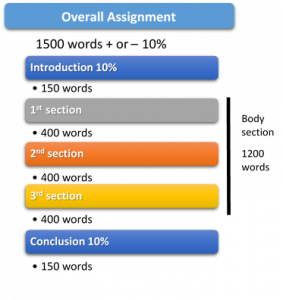
If you have never written an essay before, you may feel unsure about how to start. Breaking your essay into sections and allocating words accordingly will make this process more manageable and will make planning the overall essay structure much easier.
- An essay requires an introduction, body paragraphs and a conclusion.
- Generally, an introduction and conclusion are approximately 10% each of the total word count.
- The remaining words can then be divided into sections and a paragraph allowed for each area of content you need to cover.
- Use your task and criteria sheet to decide what content needs to be in your plan
An effective essay introduction needs to inform your reader by doing four basic things:
Table 20.1 An effective essay
An effective essay body paragraph needs to:
An effective essay conclusion needs to:
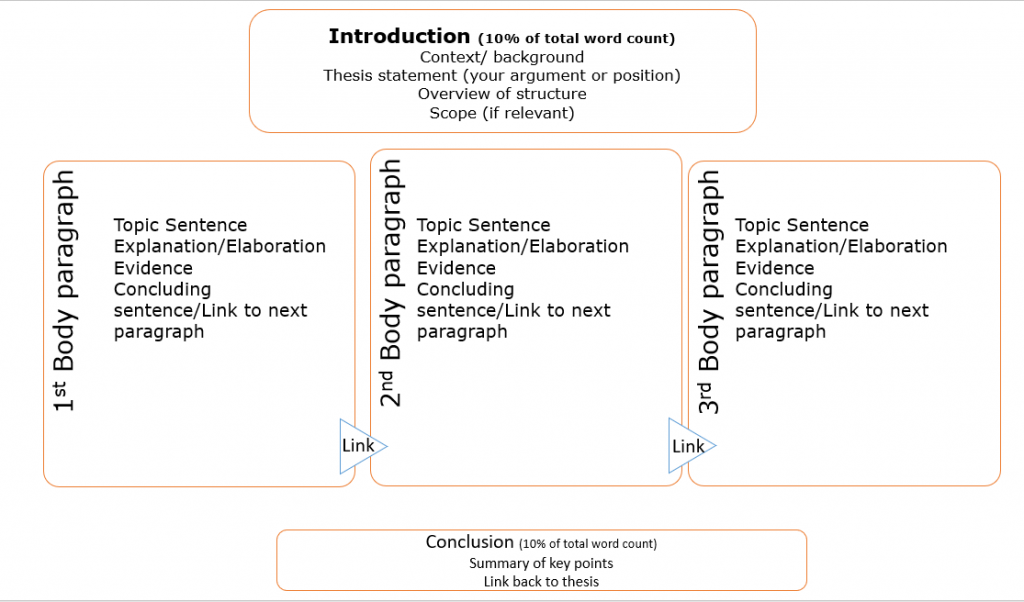
Common types of essays
You may be required to write different types of essays, depending on your study area and topic. Two of the most commonly used essays are analytical and argumentative . The task analysis process discussed in the previous chapter Writing Assignments will help you determine the type of essay required. For example, if your assignment question uses task words such as analyse, examine, discuss, determine or explore, you would be writing an analytical essay . If your assignment question has task words such as argue, evaluate, justify or assess, you would be writing an argumentative essay . Despite the type of essay, your ability to analyse and think critically is important and common across genres.
Analytical essays

These essays usually provide some background description of the relevant theory, situation, problem, case, image, etcetera that is your topic. Being analytical requires you to look carefully at various components or sections of your topic in a methodical and logical way to create understanding.
The purpose of the analytical essay is to demonstrate your ability to examine the topic thoroughly. This requires you to go deeper than description by considering different sides of the situation, comparing and contrasting a variety of theories and the positives and negatives of the topic. Although in an analytical essay your position on the topic may be clear, it is not necessarily a requirement that you explicitly identify this with a thesis statement, as is the case with an argumentative essay. If you are unsure whether you are required to take a position, and provide a thesis statement, it is best to check with your tutor.
Argumentative essays
These essays require you to take a position on the assignment topic. This is expressed through your thesis statement in your introduction. You must then present and develop your arguments throughout the body of your assignment using logically structured paragraphs. Each of these paragraphs needs a topic sentence that relates to the thesis statement. In an argumentative essay, you must reach a conclusion based on the evidence you have presented.
Case Study Responses
Case studies are a common form of assignment in many study areas and students can underperform in this genre for a number of key reasons.
Students typically lose marks for not:
- Relating their answer sufficiently to the case details
- Applying critical thinking
- Writing with clear structure
- Using appropriate or sufficient sources
- Using accurate referencing
When structuring your response to a case study, remember to refer to the case. Structure your paragraphs similarly to an essay paragraph structure but include examples and data from the case as additional evidence to support your points (see Figure 20.5 ). The colours in the sample paragraph below show the function of each component.
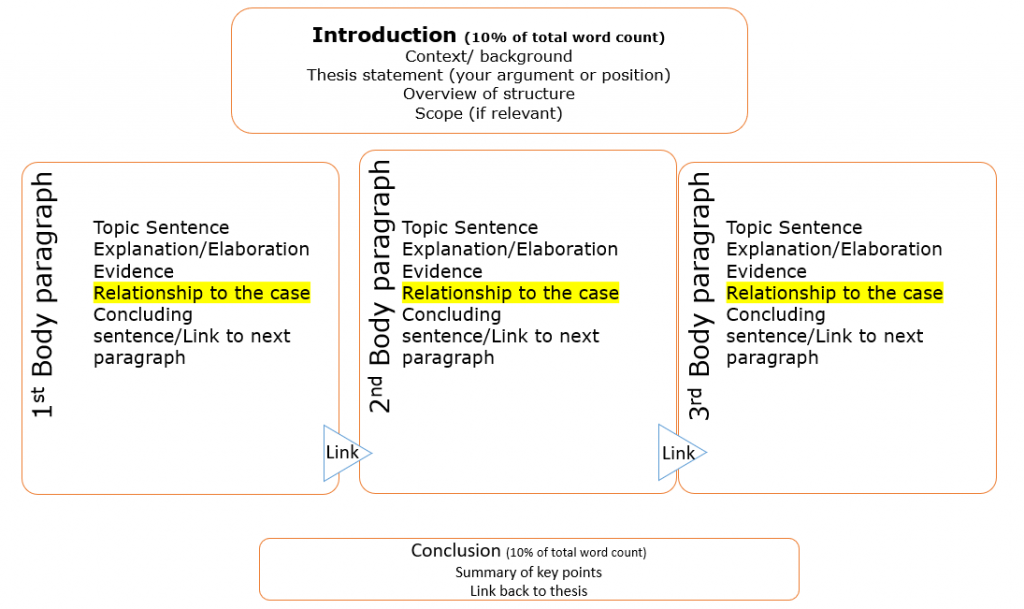
The Nursing and Midwifery Board of Australia (NMBA) Code of Conduct and Nursing Standards (2018) play a crucial role in determining the scope of practice for nurses and midwives. A key component discussed in the code is the provision of person-centred care and the formation of therapeutic relationships between nurses and patients (NMBA, 2018). This ensures patient safety and promotes health and wellbeing (NMBA, 2018). The standards also discuss the importance of partnership and shared decision-making in the delivery of care (NMBA, 2018, 4). Boyd and Dare (2014) argue that good communication skills are vital for building therapeutic relationships and trust between patients and care givers. This will help ensure the patient is treated with dignity and respect and improve their overall hospital experience. In the case, the therapeutic relationship with the client has been compromised in several ways. Firstly, the nurse did not conform adequately to the guidelines for seeking informed consent before performing the examination as outlined in principle 2.3 (NMBA, 2018). Although she explained the procedure, she failed to give the patient appropriate choices regarding her health care.
Topic sentence | Explanations using paraphrased evidence including in-text references | Critical thinking (asks the so what? question to demonstrate your student voice). | Relating the theory back to the specifics of the case. The case becomes a source of examples as extra evidence to support the points you are making.
Reports are a common form of assessment at university and are also used widely in many professions. It is a common form of writing in business, government, scientific, and technical occupations.
Reports can take many different structures. A report is normally written to present information in a structured manner, which may include explaining laboratory experiments, technical information, or a business case. Reports may be written for different audiences including clients, your manager, technical staff, or senior leadership within an organisation. The structure of reports can vary, and it is important to consider what format is required. The choice of structure will depend upon professional requirements and the ultimate aims of the report. Consider some of the options in the table below (see Table 20.2 ).
Table 20.2 Explanations of different types of reports
Reflective writing.

Reflective writing is a popular method of assessment at university. It is used to help you explore feelings, experiences, opinions, events or new information to gain a clearer and deeper understanding of your learning. A reflective writing task requires more than a description or summary. It requires you to analyse a situation, problem or experience, consider what you may have learnt and evaluate how this may impact your thinking and actions in the future. This requires critical thinking, analysis, and usually the application of good quality research, to demonstrate your understanding or learning from a situation. Essentially, reflective practice is the process of looking back on past experiences and engaging with them in a thoughtful way and drawing conclusions to inform future experiences. The reflection skills you develop at university will be vital in the workplace to assist you to use feedback for growth and continuous improvement. There are numerous models of reflective writing and you should refer to your subject guidelines for your expected format. If there is no specific framework, a simple model to help frame your thinking is What? So what? Now what? (Rolfe et al., 2001).
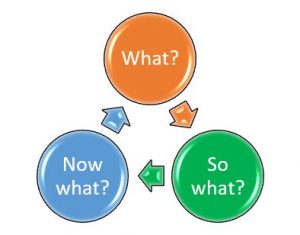
Table 20.3 What? So What? Now What? Explained.
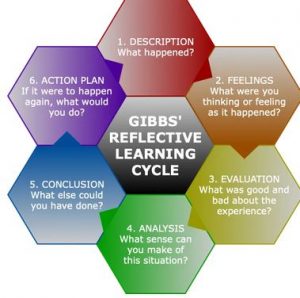
The Gibbs’ Reflective Cycle
The Gibbs’ Cycle of reflection encourages you to consider your feelings as part of the reflective process. There are six specific steps to work through. Following this model carefully and being clear of the requirements of each stage, will help you focus your thinking and reflect more deeply. This model is popular in Health.

The 4 R’s of reflective thinking
This model (Ryan and Ryan, 2013) was designed specifically for university students engaged in experiential learning. Experiential learning includes any ‘real-world’ activities including practice led activities, placements and internships. Experiential learning, and the use of reflective practice to heighten this learning, is common in Creative Arts, Health and Education.
Annotated Bibliography
What is it.
An annotated bibliography is an alphabetical list of appropriate sources (books, journals or websites) on a topic, accompanied by a brief summary, evaluation and sometimes an explanation or reflection on their usefulness or relevance to your topic. Its purpose is to teach you to research carefully, evaluate sources and systematically organise your notes. An annotated bibliography may be one part of a larger assessment item or a stand-alone assessment piece. Check your task guidelines for the number of sources you are required to annotate and the word limit for each entry.
How do I know what to include?
When choosing sources for your annotated bibliography it is important to determine:
- The topic you are investigating and if there is a specific question to answer
- The type of sources on which you need to focus
- Whether they are reputable and of high quality
What do I say?
Important considerations include:
- Is the work current?
- Is the work relevant to your topic?
- Is the author credible/reliable?
- Is there any author bias?
- The strength and limitations (this may include an evaluation of research methodology).
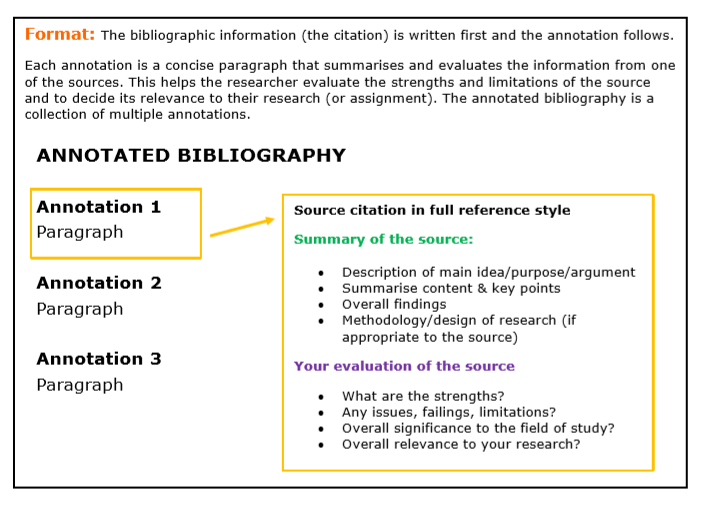
Literature Reviews
It is easy to get confused by the terminology used for literature reviews. Some tasks may be described as a systematic literature review when actually the requirement is simpler; to review the literature on the topic but do it in a systematic way. There is a distinct difference (see Table 20.4 ). As a commencing undergraduate student, it is unlikely you would be expected to complete a systematic literature review as this is a complex and more advanced research task. It is important to check with your lecturer or tutor if you are unsure of the requirements.
Table 20.4 Comparison of Literature Reviews
Generally, you are required to establish the main ideas that have been written on your chosen topic. You may also be expected to identify gaps in the research. A literature review does not summarise and evaluate each resource you find (this is what you would do in an annotated bibliography). You are expected to analyse and synthesise or organise common ideas from multiple texts into key themes which are relevant to your topic (see Figure 20.10 ). Use a table or a spreadsheet, if you know how, to organise the information you find. Record the full reference details of the sources as this will save you time later when compiling your reference list (see Table 20.5 ).
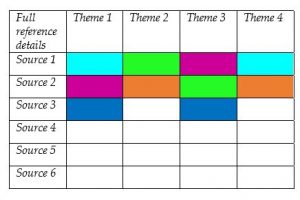
Overall, this chapter has provided an introduction to the types of assignments you can expect to complete at university, as well as outlined some tips and strategies with examples and templates for completing them. First, the chapter investigated essay assignments, including analytical and argumentative essays. It then examined case study assignments, followed by a discussion of the report format. Reflective writing , popular in nursing, education and human services, was also considered. Finally, the chapter briefly addressed annotated bibliographies and literature reviews. The chapter also has a selection of templates and examples throughout to enhance your understanding and improve the efficacy of your assignment writing skills.
- Not all assignments at university are the same. Understanding the requirements of different types of assignments will assist in meeting the criteria more effectively.
- There are many different types of assignments. Most will require an introduction, body paragraphs and a conclusion.
- An essay should have a clear and logical structure and use formal but reader friendly language.
- Breaking your assignment into manageable chunks makes it easier to approach.
- Effective body paragraphs contain a topic sentence.
- A case study structure is similar to an essay, but you must remember to provide examples from the case or scenario to demonstrate your points.
- The type of report you may be required to write will depend on its purpose and audience. A report requires structured writing and uses headings.
- Reflective writing is popular in many disciplines and is used to explore feelings, experiences, opinions or events to discover what learning or understanding has occurred. Reflective writing requires more than description. You need to be analytical, consider what has been learnt and evaluate the impact of this on future actions.
- Annotated bibliographies teach you to research and evaluate sources and systematically organise your notes. They may be part of a larger assignment.
- Literature reviews require you to look across the literature and analyse and synthesise the information you find into themes.
Gibbs, G. (1988). Learning by doing: A guide to teaching and learning methods. Further Education Unit, Oxford Brookes University, Oxford.
Rolfe, G., Freshwater, D., Jasper, M. (2001). Critical reflection in nursing and the helping professions: a user’s guide . Basingstoke: Palgrave Macmillan.
Ryan, M. & Ryan, M. (2013). Theorising a model for teaching and assessing reflective learning in higher education. Higher Education Research & Development , 32(2), 244-257. doi: 10.1080/07294360.2012.661704
Academic Success Copyright © 2021 by University of Southern Queensland is licensed under a Creative Commons Attribution-NonCommercial-ShareAlike 4.0 International License , except where otherwise noted.
Share This Book
- Utility Menu
GA4 Tracking Code
Gen ed writes, writing across the disciplines at harvard college.
- Types of Assignments
Gen Ed courses transcend disciplinary boundaries in a variety of ways, so the types of writing assignments that they include also often venture outside the traditional discipline-specific essays. You may encounter a wide variety of assignment types in Gen Ed, but most can be categorized into four general types:
- Traditional academic assignments include the short essays or research papers most commonly associated with college-level assignments. Generally speaking, these kinds of assignments are "expository" in nature, i.e., they ask you to engage with ideas through evidence-base argument, written in formal prose. The majority of essays in Expos courses fall into this category of writing assignment types.
- Less traditional academic assignments include elements of engagement in academia not normally encountered by undergraduates.
- Traditional non-academic assignments include types of written communication that students are likely to encounter in real world situations.
- Less traditional non-academic assignments are those that push the boundaries of typical ‘writing’ assignments and are likely to include some kind of creative or artistic component.
Examples and Resources
Traditional academic.
For most of us, these are the most familiar types of college-level writing assignments. While they are perhaps less common in Gen Ed than in departmental courses, there are still numerous examples we could examine.
Two illustrations of common types include:
Example 1: Short Essay Professor Michael Sandel asks the students in his Gen Ed course on Tech Ethics to write several short essays over the course of the semester in which they make an argument in response to the course readings. Because many students will never have written a philosophy-style paper, Professor Sandel offers students a number of resources—from a guide on writing in philosophy, to sample graded essays, to a list of logical fallacies—to keep in mind.
Example 2: Research Paper In Who Lives, Who Dies, Who Cares?, a Gen Ed course co-taught by multiple global health faculty members, students write a 12–15 page research paper on a biosocial analysis of a global health topic of their choosing for the final assignment. The assignment is broken up into two parts: (1) a proposal with annotated bibliography and (2) the final paper itself. The prompt clearly outlines the key qualities and features of a successful paper, which is especially useful for students who have not yet written a research paper in the sciences.
Less Traditional Academic
In Gen Ed, sometimes assignments ask students to engage in academic work that, while familiar to faculty, is beyond the scope of the typical undergraduate experience.
Here are a couple of examples from Gen Ed courses:
Example 1: Design a conference For the final project in her Gen Ed course, Global Feminisms, Professor Durba Mitra asks her students to imagine a dream conference in the style of the feminist conferences they studied in class. Students are asked to imagine conference panels and events, potential speakers or exhibitions, and advertising materials. While conferences are a normal occurrence for graduate students and professors, undergraduates are much less likely to be familiar with this part of academic life, and this kind of assignment might require more specific background and instructions as part of the prompt.
Example 2: Curate a museum exhibit In his Gen Ed class, Pyramid Schemes, Professor Peter Der Manuelian's final project offers students the option of designing a virtual museum exhibit . While exhibit curation can be a part of the academic life of an anthropologist or archaeologist, it's not often found in introductory undergraduate courses. In addition to selecting objects and creating a virtual exhibit layout, students also wrote an annotated bibliography as well as an exhibit introduction for potential visitors.
Traditional Non-academic
One of the goals of Gen Ed is to encourage students to engage with the world around them. Sometimes writing assignments in Gen Ed directly mirror types of writing that students are likely to encounter in real-world, non-academic settings after they graduate.
The following are several examples of such assignments:
Example 1: Policy memo In Power and Identity in the Middle East, Professor Melani Cammett assigns students a group policy memo evaluating "a major initiative aimed at promoting democracy in the Middle East and North Africa (MENA)." The assignment prompt is actually structured as a memo, providing context for students who likely lack experience with the format. It also outlines the key characteristics of a good memo, and it provides extensive advice on the process—especially important when students are working in groups.
Example 2: Letter In Loss, Professor Kathleen Coleman asks students to write a letter of condolence . The letter has an unusual audience: a mother elephant who lost her calf. Since students may not have encountered this type of writing before, Professor Coleman also provides students with advice on process, pointing to some course readings that might be a good place to start. She also suggests a list of outside resources to help students get into the mindframe of addressing an elephant.
Example 3: Podcast Podcasts are becoming increasingly popular in Gen Ed classes, as they are in the real world. Though they're ultimately audio file outputs, they usually require writing and preparing a script ahead of time. For example, in Music from Earth, Professor Alex Rehding asks students to create a podcast in which they make an argument about a song studied in class. He usefully breaks up the assignments into two parts: (1) researching the song and preparing a script and (2) recording and making sonic choices about the presentation, offering students the opportunity to get feedback on the first part before moving onto the second.
Less Traditional Non-academic
These are the types of assignments that perhaps are less obviously "writing" assignments. They usually involve an artistic or otherwise creative component, but they also often include some kind of written introduction or artist statement related to the work.
The following are several examples from recently offered Gen Ed courses:
Example 1: Movie Professor Peter Der Manuelian offers students in his class, Pyramid Schemes, several options for the final project, one of which entails creating a 5–8 minute iMovie making an argument about one of the themes of the course. Because relatively few students have prior experience making films, the teaching staff provide students with a written guide to making an iMovie as well as ample opportunities for tech support. In addition to preparing a script as part of the production, students also submit both an annotated bibliography and an artist’s statement.
Example 2: Calligram In his course, Understanding Islam and Contemporary Muslim Societies, Professor Ali Asani asks students to browse through a provided list of resources about calligrams, which are an important traditional Islamic art form. Then they are required to "choose a concept or symbol associated with God in the Islamic tradition and attempt to represent it through a calligraphic design using the word Allah," in any medium they wish. Students also write a short explanation to accompany the design itself.
Example 3: Soundscape In Music from Earth, Professor Alex Rehding has students create a soundscape . The soundscape is an audio file which involves layering sounds from different sources to create a single piece responding to an assigned question (e.g. "What sounds are characteristic of your current geographical region?"). Early on, as part of the development of the soundscape, students submit an artist's statement that explains the plan for the soundscape, the significance of the sounds, and the intention of the work.
- DIY Guides for Analytical Writing Assignments

- Unpacking the Elements of Writing Prompts
- Receiving Feedback
Assignment Decoder

Understanding the Different Types of Assignments in Detail
As students advance in their academics studies, their academic knowledge increases thus increasing the level of assignments issue by their lecturers. Students are given academic assignments to test their level of understanding in a particular topic or subject.
Are you a student struggling to understand the various types of assignments you encounter during your academic journey? Look no further! In this article, I will provide you with a comprehensive overview of the different assignment types commonly found in universities. By gaining a better understanding of these assignment categories , you will be better equipped to meet the requirements and excel in your academics.
Assignments come in different forms and serve different purposes. Some of the most common types of assignments you may encounter include essays, case study responses, reports, reflective writing assignments , annotated bibliographies , and literature reviews . Let’s explore each of these assignment types in detail!
Are You Working on a Research Paper?
Feel free to let our professional writers help you
What You'll Learn
Essay Assignments
One of the most frequently assigned tasks in university is the essay. Essays require you to present your ideas and arguments in a formal and structured manner. They demand clear and logical thinking, as well as the use of credible academic sources to support your claims. Essays can be further categorized into analytical essays , where you thoroughly examine a topic, and argumentative essays , where you take a stance on an issue and provide supporting evidence.
How to Format Essay Assignments
The following is a general list of sections you should include in your essay assignment:
A good essay title tells people what your essay is about. It helps them know what to expect from your essay, especially if they’re reading it for their own research. If the essay title is interesting, it can also make people curious and want to read your essay.
How important a catchy title is depends on the type of essay you’re writing. If it’s for a class assignment and your teacher is the only one reading it, the title doesn’t have to be super exciting. But if you’re entering a contest, applying to college or grad school, or trying to get it published, a catchy title is crucial. This is because the title is the first thing the editor or admissions committee will see, and it might decide whether they read your essay or not.
In short, a strong essay title gives a clear idea of what your essay is about. It doesn’t have to reveal everything, but it should give a general sense of what to expect and make people want to keep reading.
- Introduction
Your introduction is like the hello of your paper. It’s the first thing your reader sees, and it gives them an idea of how your writing will be. It helps them know what to expect in terms of tone, voice, and style.
Think of it as a warm-up for your reader. It shares some important info about your paper, so your reader understands what you’re talking about and why it matters.
But the introduction is not just about facts. It’s also a chance to grab your reader’s interest. If you start with something cool or make them think, they’ll be more excited to read the rest.
Here’s what you should include in your introduction, no matter what kind of paper you’re writing:
- A hook to get attention : Something that makes your reader go, “Hmm, this is interesting!”
- Background information : The basics your reader needs to understand your paper.
- A clear main point or thesis statement : What your paper is all about in one sentence.
Think of paragraphs as small parts of a bigger piece of writing. Each paragraph is like a mini version of the whole thing, with its own introduction, body, and conclusion in the form of sentences.
Now, let’s break it down. A good paragraph has four important parts, and you might already know some of them from our guide:
- Transitions: These are just a few words at the start or end of a paragraph that link it to the others. They help the writing flow smoothly.
- Topic sentence: This is usually the first sentence in a paragraph. It tells you what the whole paragraph is about.
- Supporting sentences: These sentences make up the main part of your paragraph. There are usually one to three of them, and they give more information or reasons to support the topic sentence.
- Conclusion (Summary): This is the last sentence of your paragraph. It sums up or repeats your main point in light of the evidence you provided.
Many people find writing conclusions in essays tough. But, they are super important because they make things clear and give you a better understanding of the topic.
To make a good ending for your essay, follow these steps:
Restate the thesis : A good ending reminds the reader about the main idea of your essay. But don’t just repeat it word for word. Say it in a different way while keeping the main point.
Repeat the important points : Besides talking again about your main idea, also go over the key points you made to support it. Instead of saying the same things you said before, summarize the main ideas.
Connect the beginning and ending statements : It’s helpful to go back to what you talked about at the start of your essay. This gives the reader a clear ending. You can do this by using similar ideas, going back to a story you started with, or using the same images.
Give some new thoughts Your ending should give the reader something to think about. It could be a solution, a new idea, questions for more thinking, or a call to do something. Explain why your ideas matter and why people should care. Answer these kinds of questions to leave your reader with something important to ponder.
- References.
You should include a list of sources (including module materials) that are mentioned in the essay. Find out more in the ACADEMIC STYLE GUIDE
Analytical Essays
Argumentative essays.
Essay assignment example: Applying the Concepts of Epidemiology and Nursing Research on Measles Nursing Paper Essay
Case Study Assignments
In certain fields like health or business, case study assignments are commonly assigned. These assignments require students to analyze a scenario in a particular field and respond to it guided by specific questions posed concerning the situation. In many cases, the scenario or case study involves a number of issues or problems that must be dealt with in a professional workplace.
To effectively respond to a case study, it is important to refer to the case itself, structure your analysis effectively, and use examples and data from the case as evidence to support your points.
Types of Case Studies
Illustrative case study: employed to provide a descriptive portrayal of a particular situation without aiming for generalizations. Often used for educational purposes, it offers readers a tangible example, fostering a clearer understanding of concepts.
Exploratory case studies: serve the purpose of exploring a subject or phenomenon, collecting preliminary insights before conducting a more extensive study. Ideal for gaining an understanding of the scope, scale, and potential variables associated with a problem, these studies help researchers refine their focus and approach.
Explanatory case studies : focus on establishing cause-and-effect relationships. They investigate why and how a specific situation occurred and explore its impact. This type is valuable when researchers seek to uncover underlying principles or factors contributing to a particular outcome, providing a deeper understanding of complex issues.
Critical instance case studies : concentrate on instances deemed uniquely interesting or significant. By delving into cases of exceptional relevance, researchers can extract insights that might be applicable to broader contexts. This type is particularly useful when studying rare or extreme cases that offer a distinctive perspective on an issue or challenge.
Prospective or longitudinal case studies: involve tracking the development of a situation over time. This approach necessitates repeated observations and data collection to analyze changes and patterns, making it well-suited for studying processes, developments, or changes in individuals, groups, or organizations over an extended period.
Steps to writing an answer to a case study assignment
- Carefully read the case study and questions
- Identify the issues being raised in the case study
- Link theory to practice
- Draft your answer
- Start writing your case study
- Proofread and edit
Analyzing Case Studies
When analyzing a case study, consider the following aspects:
- Context: Understand the background and setting of the case.
- Key Issues: Identify the main problems or challenges within the case.
- Analysis: Apply relevant theories or concepts to examine the case in depth.
- Recommendations: Offer practical solutions or suggestions for addressing the issues.
Example Case Study Analysis
“The case study presents a real-world scenario in the healthcare industry, focusing on the challenges faced by a hospital in improving patient satisfaction. Through a detailed analysis of patient feedback and hospital data, I identified the key issues contributing to low satisfaction scores, such as long wait times and inadequate communication. Based on this analysis, I recommended implementing strategies to streamline processes, enhance communication between staff and patients, and improve overall patient experience. This case study provided valuable insights into the complexities of healthcare management and the importance of patient-centered care.” – Student, Health Management Program
Case Study Structure
A well-structured case study analysis typically includes the following sections:
- Introduction: Provide a brief overview of the case and its importance.
- Background: Present relevant background information about the case.
- Analysis: Analyze the case, addressing the key issues identified.
- Findings: Summarize your findings based on the analysis.
- Conclusion: Provide a concise conclusion that ties everything together.
Related blog article: Case Study on Moral Status .
Report Assignments
Reports are a common form of assessment in various professions. They serve as a means of communicating information and analysis to a specific audience. Report assignments can take different structures and formats, depending on the professional requirements and the purpose of the report.
In general, a report consists of several sections that provide a comprehensive overview of the topic being discussed. This may include an executive summary, introduction, methodology, findings, analysis, and conclusion.
The specific sections of a report can vary depending on the field and purpose of the assignment. For example, a business report may include sections on market analysis, financial analysis, and recommendations, while a scientific research report may include sections on hypothesis, methodology, results, and discussion.
When working on a report assignment, it is important to carefully follow the given guidelines and structure the report in a logical and coherent manner. Each section should be clearly labeled and organized, making it easy for the reader to navigate and understand the content.
Additionally, reports often require the use of visual aids such as tables, charts, and graphs to present data and support findings. These visual elements should be properly formatted and referenced within the text.
Overall, report assignments require careful planning, research, and analysis to effectively present information and make informed recommendations. By understanding the structure and components of reports, you can ensure that your assignments meet the requirements and effectively convey your findings and insights to the intended audience.
Report assignment essay: Term-Long Project Nursing Paper Example
Reflective Writing, Annotated Bibliographies, and Literature Reviews
Reflective writing assignments , annotated bibliographies, and literature reviews are important types of assignments that you may encounter in your academic journey. They each serve a unique purpose and require specific approaches to effectively complete them. These assignments encourage self-reflection and exploration of personal experiences and thoughts on a particular topic.
Reflective Writing Assignments
Reflective writing assignments provide an opportunity for self-reflection and personal exploration. In fields such as nursing, education, and human services, these assignments encourage you to think critically about your experiences, thoughts, and emotions related to a particular topic. By analyzing your own reactions and considering the impact of these experiences, you can gain deeper insights and develop a greater understanding of the subject matter.
Annotated Bibliographies
Annotated bibliographies are valuable resources that provide a comprehensive list of sources accompanied by brief descriptions and evaluations. These assignments require you to carefully select relevant sources and provide thoughtful annotations that summarize the key points, strengths, and weaknesses of each source. By creating an annotated bibliography, you demonstrate your ability to critically analyze and evaluate existing literature on a particular topic.
Literature Reviews
Literature reviews involve a thorough examination of existing literature on a specific subject. They aim to identify current trends, research gaps, and areas for further investigation. By conducting a comprehensive review of scholarly articles, books, and other relevant sources, you can contribute to the existing knowledge base and showcase your ability to synthesize information from multiple sources.
Now that you have a better understanding of the different types of assignments , you can confidently tackle any task that comes your way. Remember, at StudyingHq.com, you can find thousands of free essay examples, samples, guides, topics, and research papers to inspire your own work. And if you need writing assistance, our team of expert writers is ready to help you within 2-3 hours. Good luck with your assignments!
What are the different types of assignments in university?
Some common types of assignments include essays, case study responses, reports, reflective writing assignments, annotated bibliographies, and literature reviews.
What do essays require and how can they be categorized?
Essays require formal language, a clear and logical structure, and the use of credible academic sources. They can be categorized into analytical essays , which involve examining a topic thoroughly, and argumentative essays , which require taking a position on an issue and presenting arguments supported by evidence.
What are case study assignments and how should I respond to them?
Case study assignments involve analyzing a specific situation, problem, or organization over a selected period of time. When responding to a case study, it is important to refer to the case, structure your paragraphs effectively, and use examples and data from the case as evidence to support your points.
What are the different types of report assignments?
Reports can take different structures, such as business reports or scientific and research reports. The structure of a report depends on professional requirements and the purpose of the report. It typically includes sections like an executive summary, introduction, process, findings, and conclusion.
What are reflective writing assignments, annotated bibliographies, and literature reviews?
Reflective writing assignments involve self-reflection and exploring personal experiences or thoughts on a particular topic. Annotated bibliographies are lists of sources with brief descriptions and evaluations. Literature reviews examine existing literature on a topic, highlighting current trends and identifying research gaps.
Source Links
- https://usq.pressbooks.pub/academicsuccess/chapter/types-of-assignments/
- https://www.writeneed.com/post/2017/09/20/the-different-types-of-academic-assignments
- https://writingcenter.unc.edu/tips-and-tools/understanding-assignments/
Start by filling this short order form order.studyinghq.com
And then follow the progressive flow.
Having an issue, chat with us here
Cathy, CS.
New Concept ? Let a subject expert write your paper for You
Post navigation
Previous post.

📕 Studying HQ
Typically replies within minutes
Hey! 👋 Need help with an assignment?
🟢 Online | Privacy policy
WhatsApp us

IMAGES
VIDEO